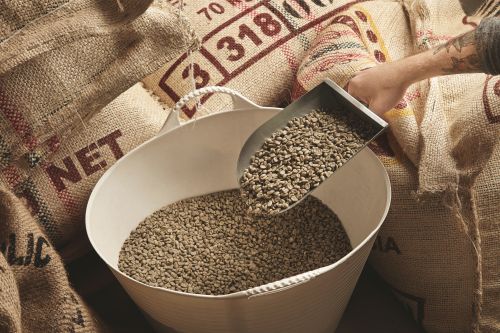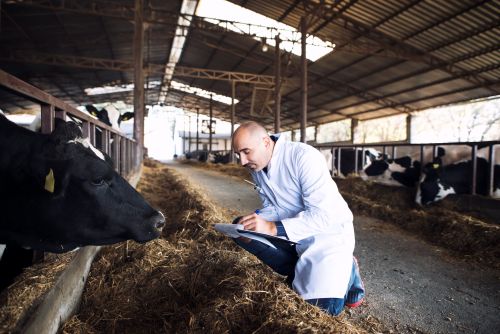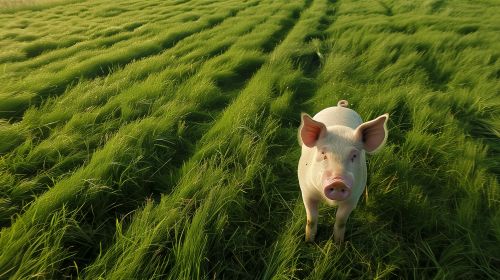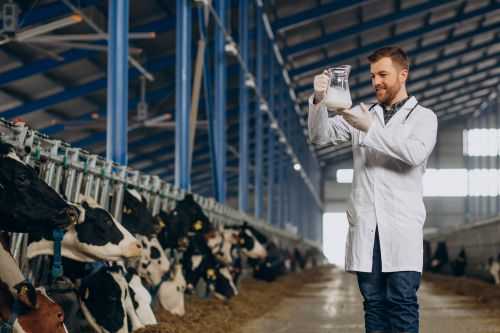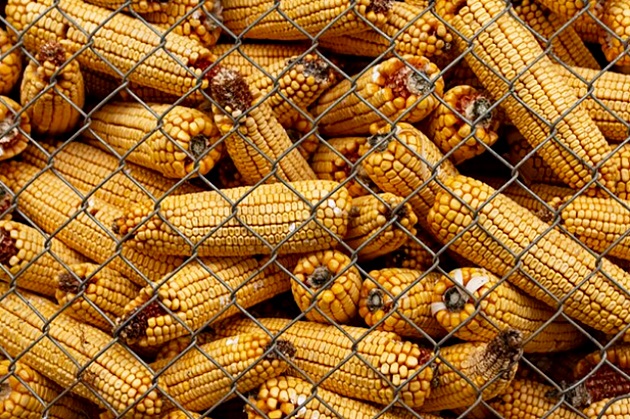
According to AllAboutFeed, the challenges facing the animal feed supply chain can cause increases in levels of mycotoxins in cereals.
Mycotoxin Geography
Rerouting shipments in the Red Sea and record corn crops in the USA are extending transit and storage times. About 40% of Asia-Europe trade normally passes through the Red Sea area.
As shipments are being rerouted due to geopolitical attacks, prolonged shipping times may allow molds to degrade nutrients in ingredients and produce mycotoxins. Storing crops for long periods can also pose challenges in maintaining quality on-farm.
Dr. Swamy Haladi, global technical commercial manager for mycotoxin risk management at Selko, said that prolonged exposure to moisture during storage could create favorable conditions for mold reproduction.
"Some estimates suggest that rerouting shipments may extend crop transit times by at least 25%. As transportation costs are rising (up to 5 times more) and transit times are extended, it is essential for crops to be protected, and the integrity of animal feed ingredients preserved," Haladi said.
Tens of thousands of observations
Speaking at Selko's annual mycotoxin assessment, Haladi said that data input from around the globe means Selko analyzes about 1,250 samples per week. In total, in 2023, there were 66,280 observations from 35 countries, composed of 67% raw materials and 33% complete feeds.
These samples included 21,601 feed samples, 16,923 cereal samples, 12,383 cereal by-products, 3,682 protein meals, 4,039 silage samples, and 7,652 nonspecific samples.
Most of the cereal samples were corn (11,984), followed by wheat (2,754) and barley (1,611), with oats, sorghum, rice, and millet making up the remaining samples. Among the feed samples, the major ones were pig feed (8,362), broiler feed (4,541), layer feed (4,086), and ruminant feed (2,640).
Pet food, piglet feed, and aquatic feed were the other categories sampled.
Dominance of mycotoxin contamination
Haladi said, based on the entire dataset, the highest percentage of contamination was by Zearalenone (ZEA) at 78%, which was surprising as traditionally other mycotoxins were more prevalent. Attributing this to climate change, Haladi said the prevalence of other mycotoxins in samples included T2HT2 (67%), fumonisins (FUM) (63%), deoxynivalenol (DON) 57%, and aflatoxins (AFLA) (50%).
Parts per billion concentrations showed FUM the highest (945ppb), followed by DON (582ppb) for average concentrations and then ZEA (93ppb). Median concentrations showed FUM at 438 ppb, followed by DON at 200 ppb with ZEA far behind at 31 ppb.
DON had a maximum concentration at 150,000 ppb. The contaminated ppb average showed FUM at 1465 ppb and DON at 990 ppb. Haladi said the difference between FUS and DON was tighter than in previous years.
Raw materials
Commenting on the raw material results, Haladi said high levels of contamination were observed overall, except for rice, when looking at cereal samples compared to barley, corn, oats, sorghum, and wheat. Very high percentages of T2 contamination were found in oats and barley, with high levels of FUM contamination in corn, but also now rising in wheat.
Analyzing last year's corn mycotoxin concentration trends, DON levels increased in the latter half of the year when temperatures were lower, while FUM levels peaked in the summer months.
High percentages of contamination, especially with ZEA, were found in cereal by-products, while up to 97% of silages tested positive for T2, 92% for ZEA, 88% for FUM, and 86% for DON. Concentration levels were also high, around 600-700 ppb, and Haladi urged producers to consider silages and production quality.
Feeds
Regarding poultry feed, Haladi said there weren't too many variations between layer feed and broiler feed contamination but slightly higher contamination with DON in layer feed.
Concentrations were quite high, with FUMs leading the graph around 800-900 ppm, followed by DON. Haladi said recent research has found what levels are toxic for poultry - for broilers, less than 250 ppb were safe and did not require action; 250-500ppb represented low risk; 500-1,000 ppb medium, 1,000+ppb high risk.
He said poultry are sensitive to both FUM and DON, and their impact on intestinal health is more than previously thought, which will be a growing concern for the sector next year.
High levels of contamination were found in pig feed, but a striking anomaly - piglet feed showed a relatively lower level of contamination. Most samples showed high concentrations of FUM, DON, and ZEA.
For ruminant feed, contamination levels are around 74-75% for T2 and ZEA followed by DON (62%) and AFLA (51%). Mature animals could cope with the toxins. Very high levels of contamination for DON and AFLA were observed in calf rumen feed.
Contamination levels with ZEA were found to be very high (82%) in pet food, but DON and FUM concentration levels were much higher than other mycotoxins. And in the aquatic sector contamination levels in shrimp feed are higher than fish feed due to better quality raw materials in fish feed.
Prediction model
Avinash Bhat, technical specialist for mycotoxin analysis at Masterlab, said it is important to keep feeds stress-free to get safer feeds. Contamination patterns have changed due to climate change, rising temperatures, and changes in precipitation patterns, leading, in turn, to changes in fungal pathogenicity in plants.
Data quality is essential for the success of any modeling strategy, he said. Data must be clean, accurate, and representative of target populations.
The global mycotoxin data set from 2020-2023 (totaling 272,096 data entries) was used to develop a prediction model, which specifically analyzed 60,184 aflatoxin contamination data entries that were used to develop a forecast model for 4 regions.
Based on the last 4 years, Bhat predicted that AFLA levels would be between 26.1 ppb this month, rising to 29.8 ppb in April, before slightly decreasing to 27.8 ppb in June.
Levels from other parts of the world, including Africa and the Middle East and Latin America, would be quite flat in the first half of 2024. Europe is not conducive to AFLA - so Bhat expected it to be 3 ppb in the first 6 months of the year. (Photo: Freepick)
